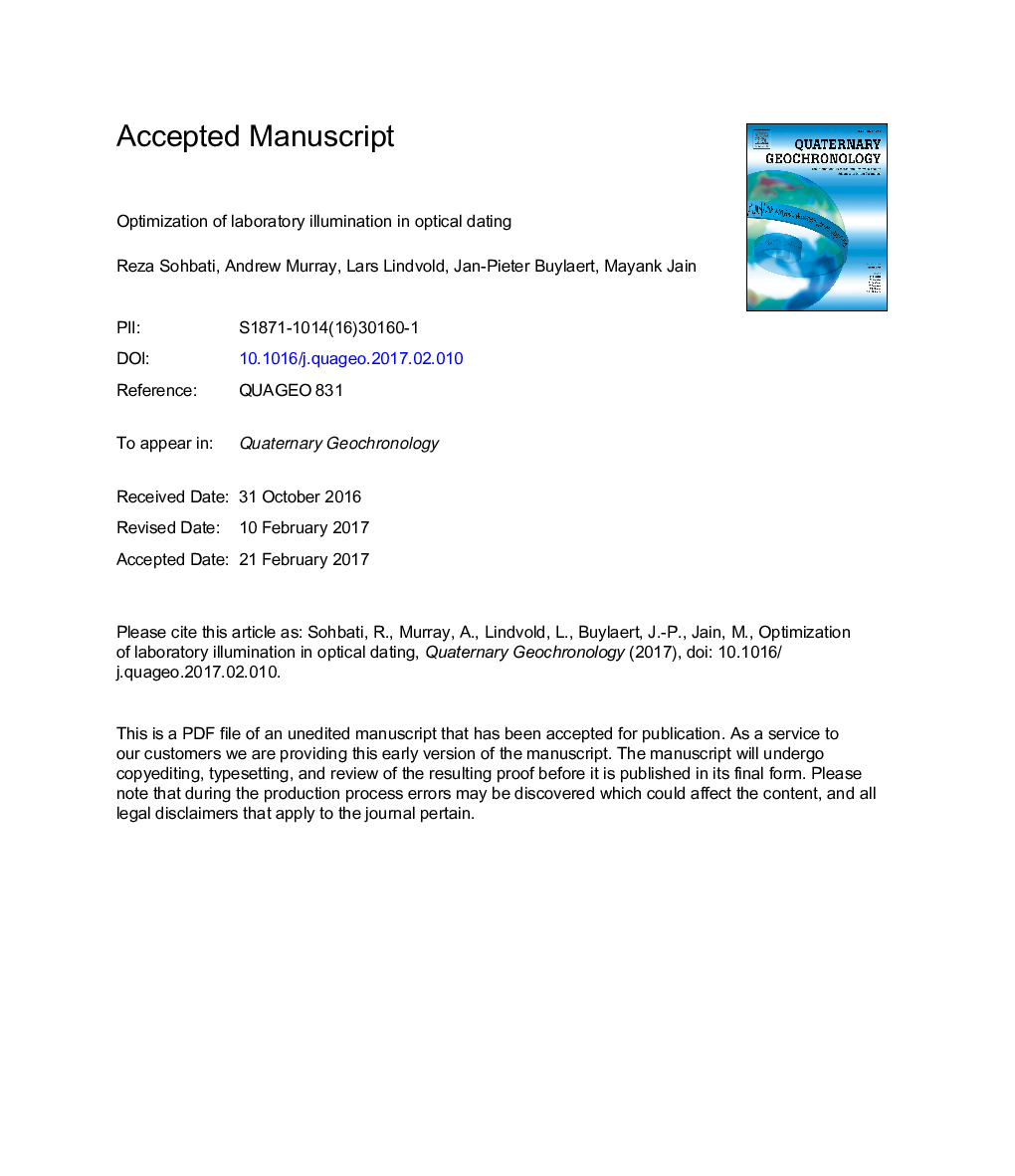| کد مقاله | کد نشریه | سال انتشار | مقاله انگلیسی | نسخه تمام متن |
|---|---|---|---|---|
| 5784996 | 1639837 | 2017 | 29 صفحه PDF | دانلود رایگان |
عنوان انگلیسی مقاله ISI
Optimization of laboratory illumination in optical dating
ترجمه فارسی عنوان
بهینه سازی نور آزمایشگاهی در مراسم عروسی
دانلود مقاله + سفارش ترجمه
دانلود مقاله ISI انگلیسی
رایگان برای ایرانیان
کلمات کلیدی
قدمت نوری، روشنایی آزمایشگاهی، بهینه سازی، رهبری،
موضوعات مرتبط
مهندسی و علوم پایه
علوم زمین و سیارات
ژئوشیمی و پترولوژی
چکیده انگلیسی
As part of the development of new laboratory lighting, we present a methodological approach applicable to the characterization of any light source intended for illumination in optical dating laboratories. We derive optical absorption cross-sections for quartz and feldspar from published data and compare these with the human eye response. The optimum peak wavelength giving the best clarity for non-dark adapted vision for the least trapped charge loss lies within the wavelength range 590-630 nm; we argue that it is unnecessary to consider dark-adapted vision. The predicted relative decay rates of quartz optically stimulated luminescence (OSL) and feldspar infrared stimulated luminescence (IRSL) signals by an incandescent light bulb and a compact fluorescent lamp (CFL) through an ILFORD 902 filter are first derived. These predicted decay rates are then compared with those of three relevant light-emitting diodes (LEDs); this comparison demonstrates the significant advantage of the LED sources over the filtered light sources, because essentially all of the reduction of both OSL and IRSL signals by the LEDs occurs at wavelengths to which the human eye is most sensitive. We conclude that exposure of quartz and feldspar extracts from various samples to the light from an LED with emission peak at 594 nm results in a â¤1% OSL or IRSL signal loss for a 48-h exposure at a power density of â¼0.2 μW.cmâ2.
ناشر
Database: Elsevier - ScienceDirect (ساینس دایرکت)
Journal: Quaternary Geochronology - Volume 39, April 2017, Pages 105-111
Journal: Quaternary Geochronology - Volume 39, April 2017, Pages 105-111
نویسندگان
Reza Sohbati, Andrew Murray, Lars Lindvold, Jan-Pieter Buylaert, Mayank Jain,
